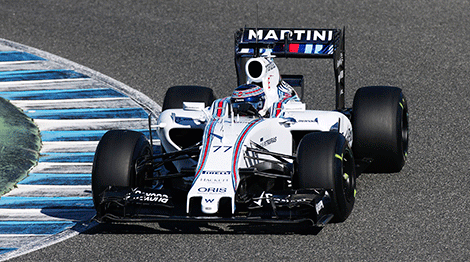
Iterative prototype designs have been mades faster through using laser sintering
Taking its designs from simulation to the track faster, and with fewer compromises, Williams F1 has developed its carbon fibre process with the help of EOS 3D printing.
With composite materials tricky to work with, Williams has decided to additively manufacture prototypes for the wing in order to test the shape, using both EOS’ P 390 and P 760 laser sinterers to build a number of front wing cascades.
Each design contains the intricate geometries that correspond to the ideas and simulations for high down-thrust and optimum tyre grip, letting the team physically test each design in the wind tunnel.

3D printed replicas of front wing assemblies are wind tunnel tested before the best designs are made from composites
Once the construction team has drawn up a shortlist of potential designs, the complex building of the appropriate moulds takes place for the actual carbon fibre composite components – which will ultimately be tested on the racetrack.
“We are firmly convinced that additive manufacturing brilliantly complements our production processes and greatly reduces our product development cycles,” says Richard Brady, advanced digital manufacturing leader at Williams F1.
“In the case of the air-deflecting components on the exterior of the front wing, this has already been an impressive success. We are very satisfied with the complete process of the prototype construction, from the manufacturing itself, through to the cooperation with EOS.
“We were able to continually reduce the production times because we were able to design the complete manufacturing process in a way that was much simpler and more efficient.
For the first time, Brady explains, Williams F1 were able to test the components without the need to carry out complex, time consuming and expensive mould construction for designs that are ultimately rejected.
“The speed of the manufacturing also means that within a given time period it’s possible to achieve many more design iterations: Where a deadline might previously have allowed only enough time for one production run, the technology means that now multiple repetitions are possible.”






